
Black Witches' Butter from Santa Cruz County, USCA, US on January 07, 2022 at 0757 AM by
According to the Missouri Department of Conservation, witches' butter is an edible mushroom. The scientific name of the fungus is Tremella mesenterica, and it is commonly found year-round on dead, deciduous wood.

Black Witches' Butter (Jelly Fungi of the Pacific Northwest) · iNaturalist
Exidia glandulosa ( common names black witches' butter, black jelly roll, or warty jelly fungus) is a jelly fungus in the family Auriculariaceae. It is a common, wood-rotting species in Europe, typically growing on dead attached branches of oak.

Exidia truncata, known as Black Witches Butter or jelly drop, wild fungus living on oak from
Summary 7. Exidia glandulosa (common names black witches' butter, black jelly roll, or warty jelly fungus) is a jelly fungus in the family Auriculariaceae. It is a common, wood-rotting species in Europe, typically growing on dead attached branches of oak. The fruit bodies are up to 3 cm (1.2 in) wide, shiny, black and blister-like, and grow.

Black Witches' Butter (EwA Guide to the Fungi, Lichens and Slime Molds of the Fells (US
Exidia nigricans, recently given the English name Warlock's Butter, is similar to (and very often confused with) Exidia glandulosa - commonly referred to as Witches' Butter or Black Witch's Butter, because of its butter-like consistency when wet and its sombre colour; however, Exidia nigricans has brain-like folds rather than being made up of ir.
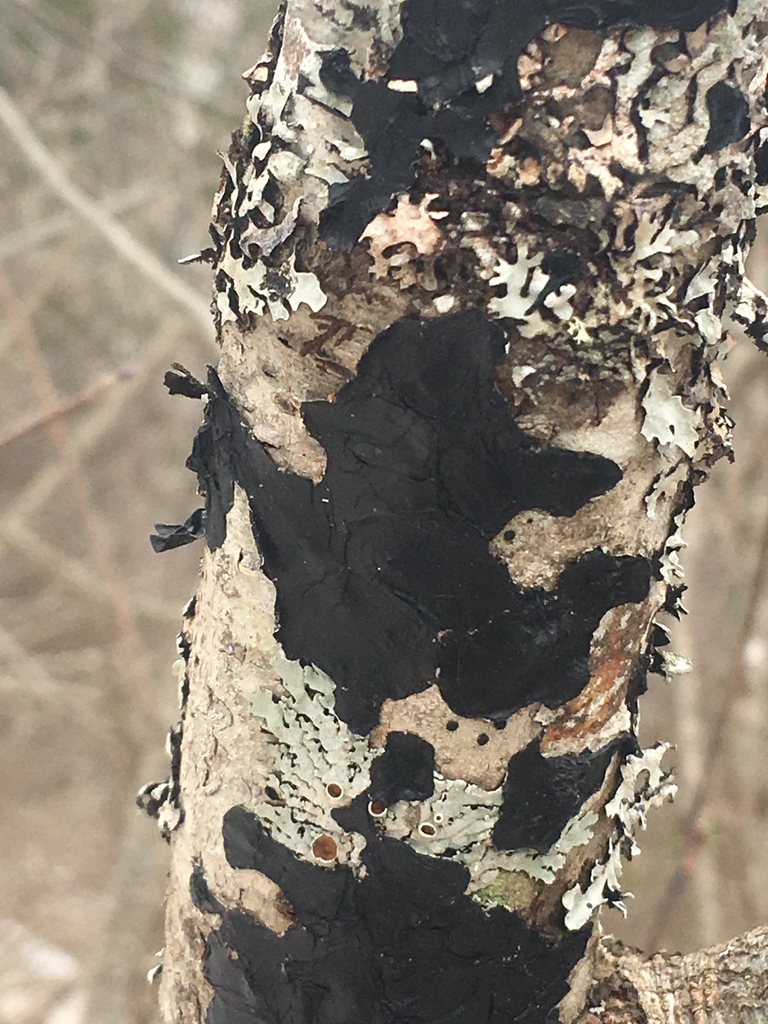
Black Witches' Butter on March 07, 2018 at 1229 PM by breton · iNaturalist
Exidia glandulosa (common names black witches' butter, black jelly roll, or warty jelly fungus) is a jelly fungus in the family Auriculariaceae. It is a common, wood-rotting species in Europe, typically growing on dead attached branches of oak.
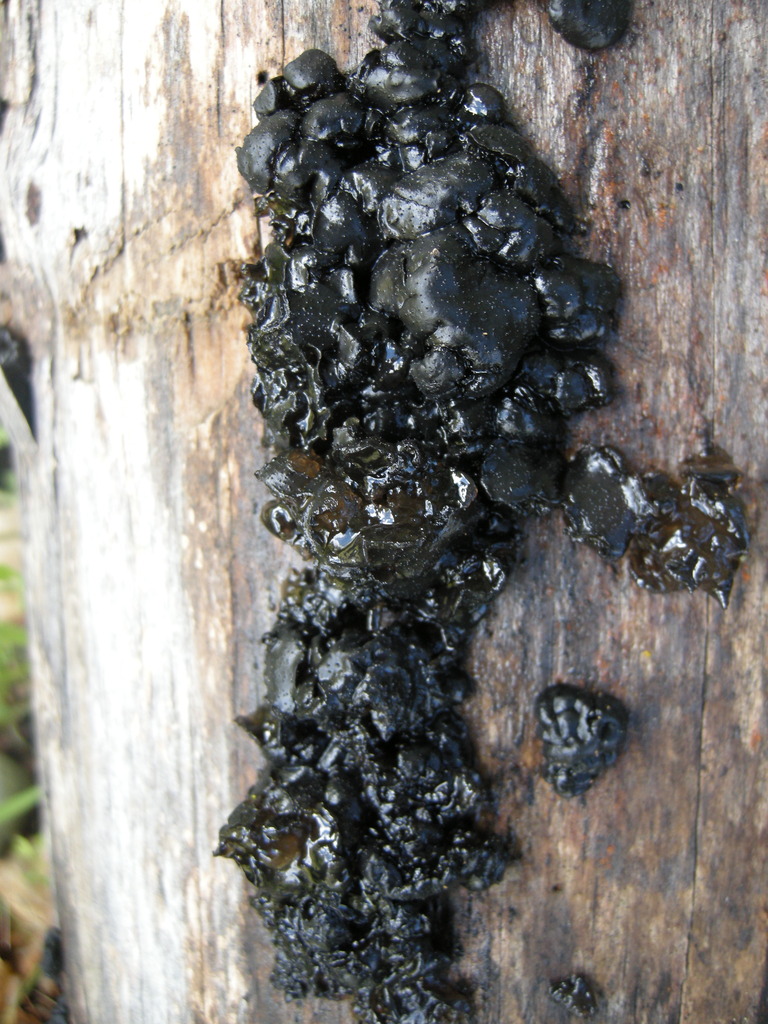
Black Witches' Butter (Jelly Fungi of the Pacific Northwest) · iNaturalist
Exidia glandulosa is a type of fungus found in Europe that grows on dead branches of oak trees. It produces shiny black blister-like fruit bodies that can be up to 3 cm wide, and grow alone or in groups. The fruit bodies are initially firm but can become soft and distorted with age or in wet weather.
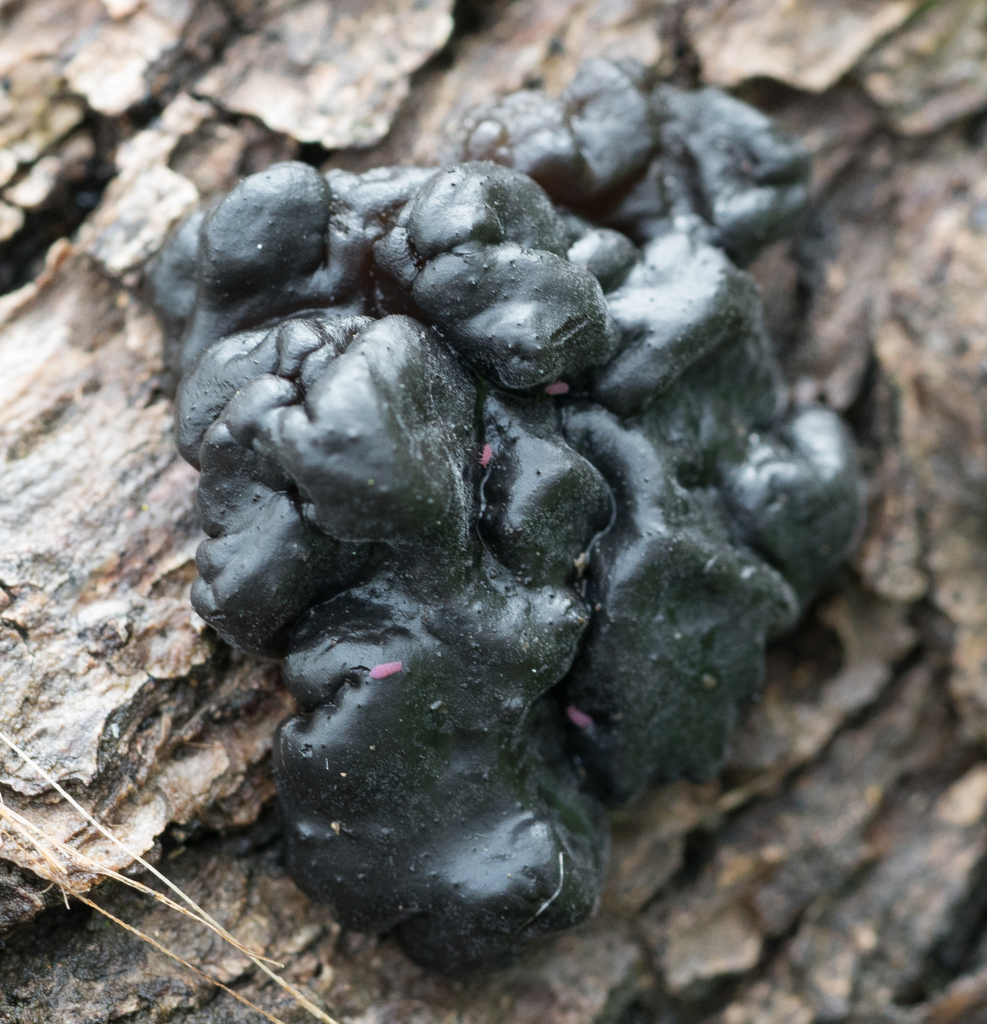
Black Witches' Butter (Jelly Fungi of the Pacific Northwest) · iNaturalist
Black witches' butter, Exidia glandulosa (Bull.) Fr. Classification Kingdom Fungi Phylum Basidiomycota Class Basidiomycetes Order Tremellales Family Exidiaceae Genus Exidia Synonyms Exidia intumescens sensu auct. fide Checklist of Basidiomycota of Great Britain and Ireland (2005) Exidia plana sensu auct.
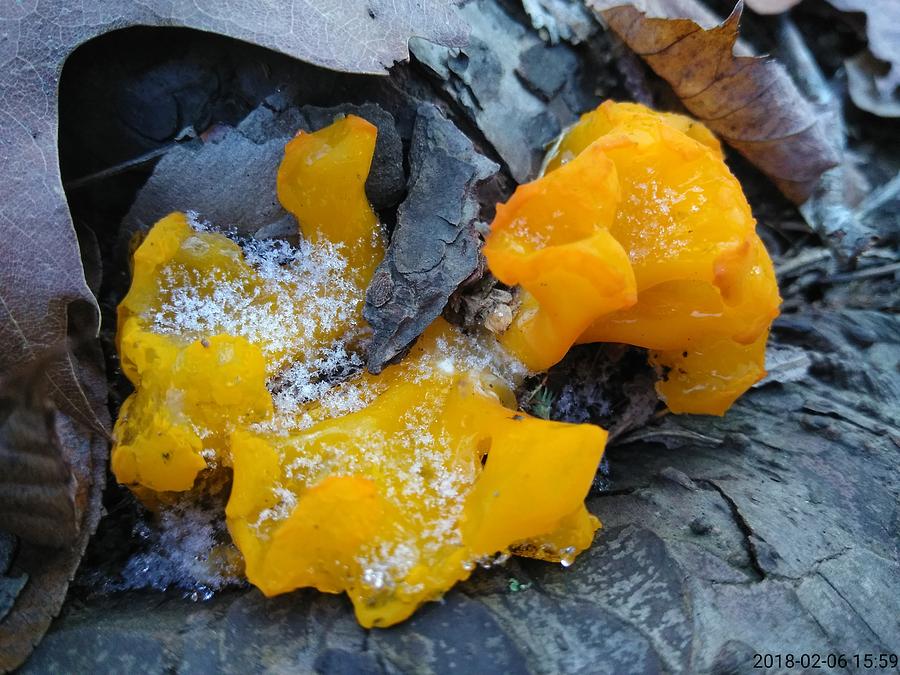
Witches Butter in Winter Photograph by Robert Nickologianis Fine Art America
Exidia nigricans ( common name Witches' butter) is a jelly fungus in the family Auriculariaceae. It is a common, wood-rotting species throughout the northern hemisphere, typically growing on dead attached branches of broadleaf trees. It has been much confused with Exidia glandulosa . Taxonomy
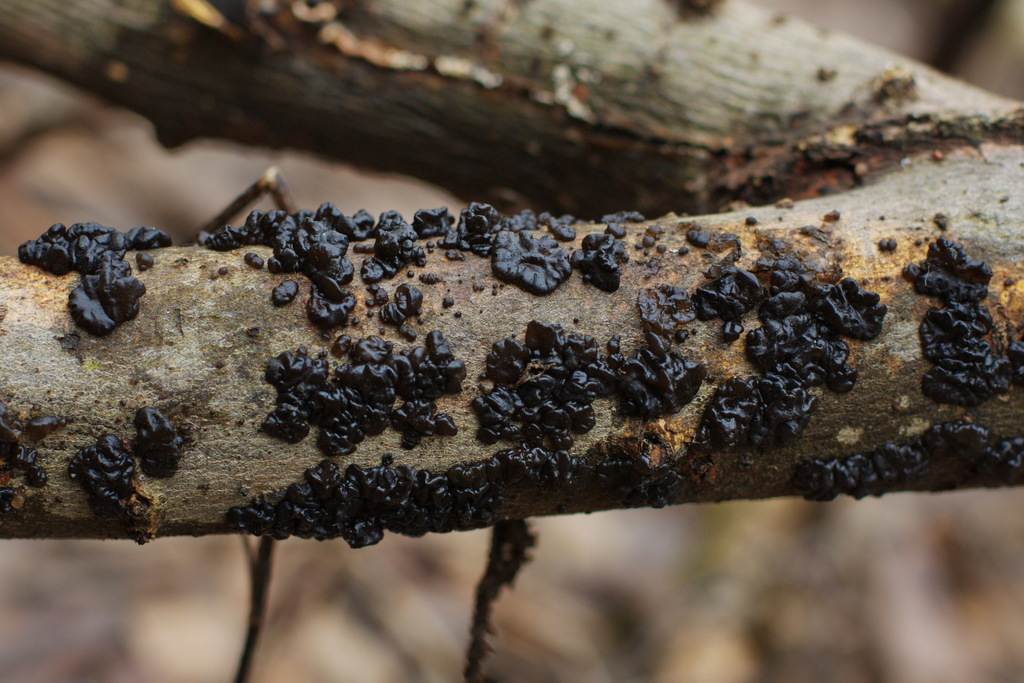
Black Witches' Butter (Jelly Fungi of the Pacific Northwest) · iNaturalist
Witches' Butter Edible Scientific Name Tremella mesenterica Family Tremellaceae Description Small, yellow, irregularly lobed, gelatinous masses. Grows on dead deciduous wood. Year-round. Fruiting body irregularly lobed, brainlike; sulfur yellow to pale yellow; texture gelatinous. Spore print yellowish. Spores magnified are oval, elliptical, smooth.
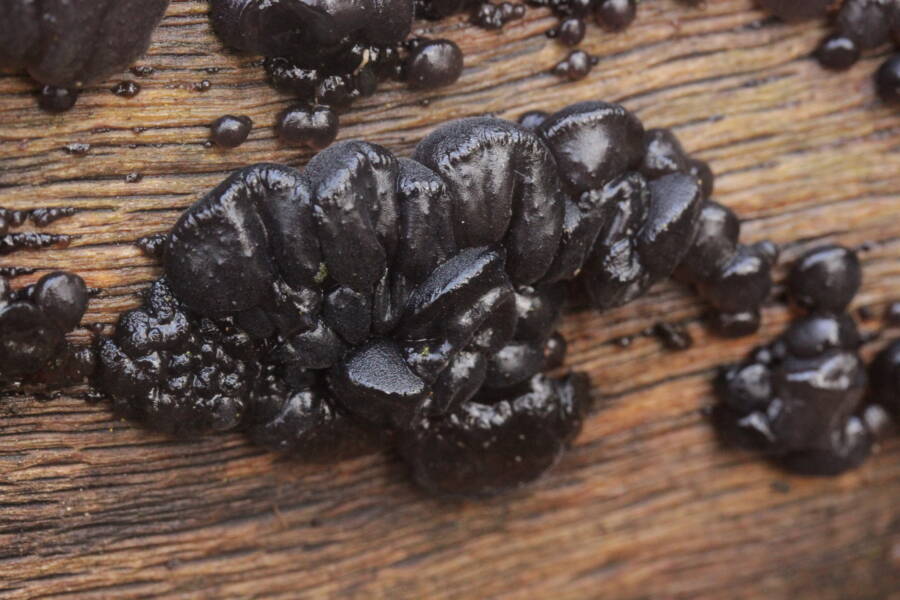
The 9 Weirdest Mushroom And Fungi Species In The World
The distinctive term of Black Witches' Butter serves as only the most frequently used name for this amazing fungus. It actually goes by several other alternate names, as well. These include the terms of the black jelly roll, and the warty jelly fungus. Its scientific name, however, is that of the Exidia glandulosa.

Black Witches' Butter from Курская обл., Россия, 307176 on March 18, 2020 at 0203 AM by Ivlev
Well, Exidia glandulosa also known as Black Witches Butter would be a good guess. This fungus is more often recognised during wetter months as it dehydrates during dry weather and shrinks to a dry, shiny and only millimetre thin membrane on the substrate surface. However, the fungus quickly recovers to a soft gelatinous blob in rainy weather.
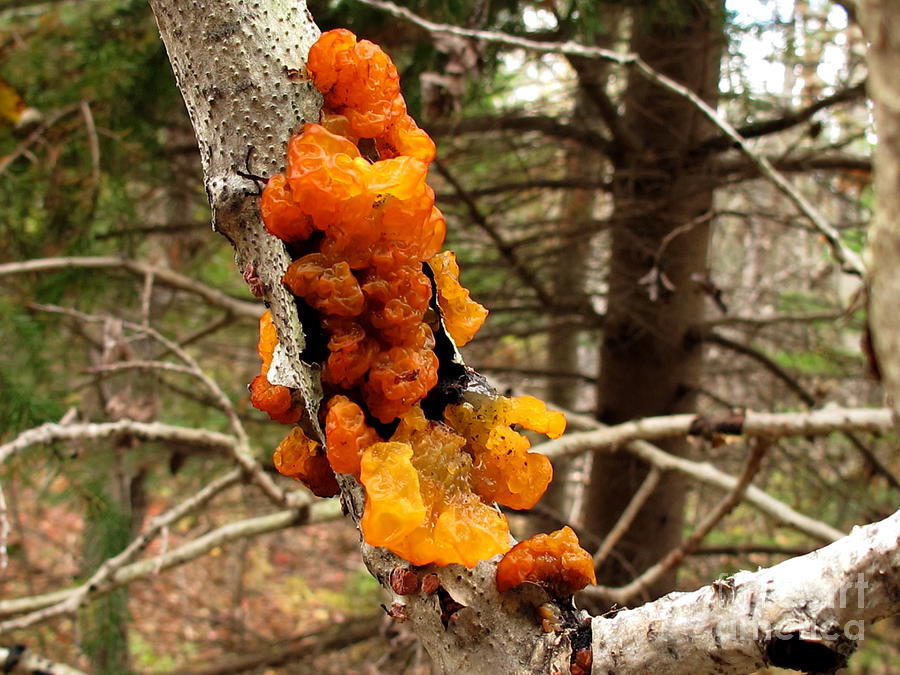
Witch's Butter Photograph by Timothy Myles Fine Art America
Description: Fruiting body: Blackish; irregular shapes fused into a mass; shiny; flesh gelatinous; usually covered with peg-like warts (use a hand lens).
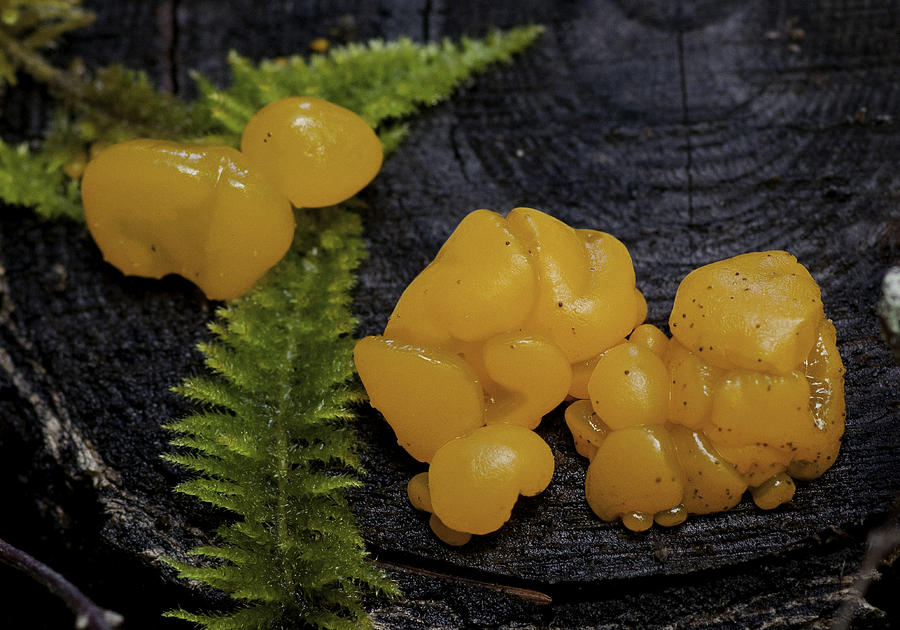
Witches Butter Photograph by Betty Depee
Witches' butter ( Tremella mesenterica) is a common fungus found across temperate and tropical regions of the entire world. In its dry state, it's a shriveled mass that may blend in with the wood and fallen leaves around it, but when revived by rain or newly-grown, the bright yellow color is hard to miss.
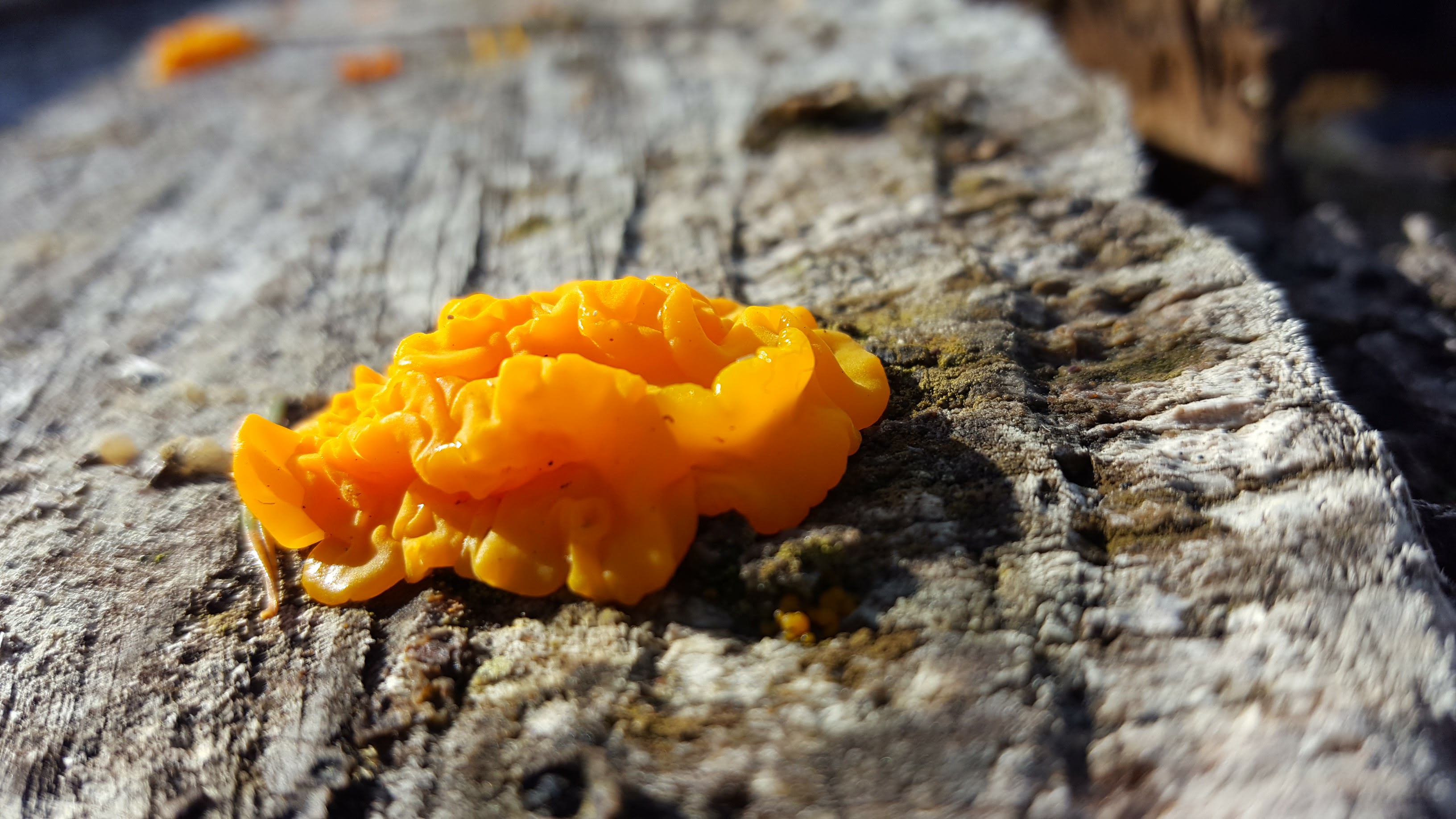
witchs butter (1) Wolf Haven International
Exidia glandulosa - often referred to as Black Witch's (or Witches') Butter, perhaps because of its butter-like consistency and greasy surface when wet as we.

Black Witches Butter Is A Woodrotting Species Of Jelly Fungus Stock Photo Download Image Now
Top or disk shaped, underside densely covered with small warts, upper surface smooth with sparse warts, dark brown or blackish. Exidia plana is similar, but eventually becomes brain-like. Usually found on dead attached branches of Oak, very occasionally on other broad-leaved species. All year round.

Black Witches' Butter from Brown County, IN, USA on December 24, 2021 at 1146 AM by Brian Hunt
-----Black Witches Butter is a jelly fungus, just like the similarly named Gold Witches Butter. It is anywhere from a greenish brown to almost black in colour, and comes in masses up to 30 cm in diameter. Although generally jelly-like, when in very dry weather, it becomes crusty and can sometimes look like a completely different fungus.